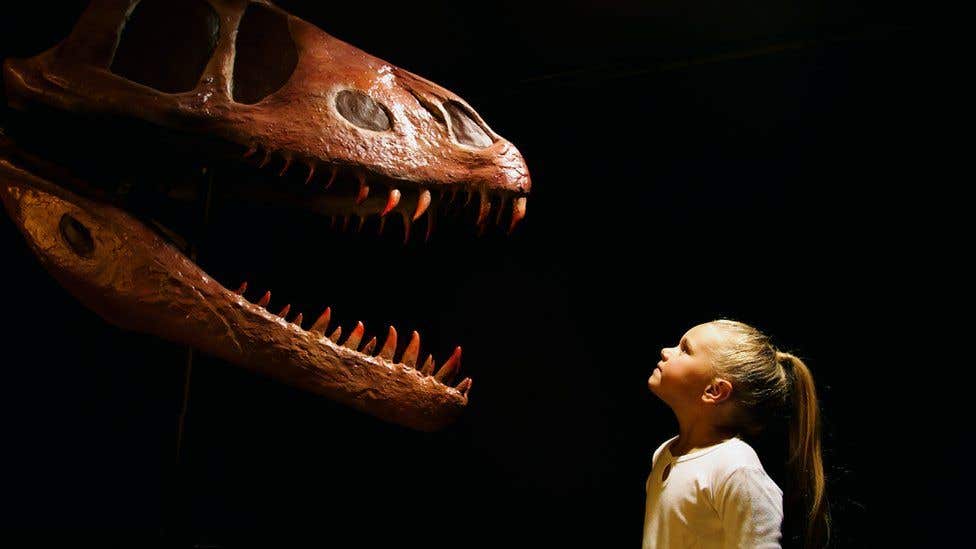Scientists discover surprising link between dinosaurs and human ageing
The “longevity bottleneck” hypothesis, connects the influence of dinosaurs over 100 million years ago to the aging process in modern mammals

The "longevity bottleneck" hypothesis, connects the influence of dinosaurs over 100 million years ago to the aging process in modern mammals. (CREDIT: Getty Images)
Could the dominance of dinosaurs millions of years ago have left an indelible mark on the way humans and other mammals age today? According to a groundbreaking theory proposed by Professor João Pedro de Magalhães from the University of Birmingham, the answer might be a resounding yes.
In a new study published in BioEssays, Professor de Magalhães introduces the "longevity bottleneck" hypothesis, connecting the influence of dinosaurs over 100 million years ago to the aging process in modern mammals, including humans.
One of the most intriguing mysteries of biology lies in the stark contrast between reptiles and amphibians, which seem to show no significant signs of senescence (biological aging), and mammals, including humans, who exhibit clear signs of aging as they grow older. This perplexing phenomenon has long puzzled scientists, but Professor de Magalhães believes he may have uncovered a missing link.
Professor João Pedro de Magalhães from the University of Birmingham. (CREDIT: University of Birmingham)
The Longevity Bottleneck Hypothesis
Professor de Magalhães' hypothesis suggests that during the Mesozoic Era, mammals faced relentless pressure for rapid reproduction while coexisting with the dinosaurs. Over the course of more than 100 million years, this unrelenting pressure led to the loss or inactivation of genes associated with long life in early mammals. As a result, modern mammals, including humans, are left with genetic remnants from this era, causing them to age more rapidly than many reptiles and amphibians.
In the words of Professor João Pedro de Magalhães himself, "The 'longevity bottleneck hypothesis' may shed light on evolutionary forces that have shaped the way that mammals have aged over millions of years. While we see humans among different species that are among the longest living animals, there are many reptiles and other animals that have a much slower aging process and show minimal signs of senescence over their lives."
To understand this hypothesis better, we must step back in time to the Mesozoic Era, a period dominated by dinosaurs.
Related Stories
During this era, some of the earliest mammals were forced to occupy the lower rungs of the food chain, constantly vulnerable to predation by the massive reptilian predators of the time, such as the Tyrannosaurus Rex. To survive, these ancient mammals evolved to reproduce rapidly, ensuring the survival of their species.
Over millions of years, this protracted period of evolutionary pressure sculpted the genetic landscape of these early mammals. Traits related to rapid reproduction became favored, while genes associated with longevity and slow aging were sacrificed. Consequently, the legacy of this era still resides in the genetic makeup of modern mammals.
Impact on Human Aging
The implications of the longevity bottleneck hypothesis are profound. It suggests that the rapid aging observed in modern mammals, including humans, is a consequence of this ancient genetic legacy. While we now boast a wide array of mammals, from humans to whales and elephants, known for their impressive size and relatively long lifespans, we still carry the genetic remnants of the Mesozoic era. As a result, we age faster than many reptilian counterparts.
Distribution of rates of ageing (A) and rates of ageing versus longevity, mammals (red; n = 14), amphibians (green; n = 3) and reptiles (blue; n = 20). Rate of ageing based on estimates of demographic ageing from ref. (CREDIT: BioEssays)
Professor de Magalhães explains, "Some of the earliest mammals were lucky to not end up as T Rex food. That long period of evolutionary pressure has, I propose, an impact on the way that we humans age." In essence, our genetic makeup is a compromise between the need for rapid reproduction in the shadow of dinosaurs and the potential for longevity and slower aging.
Cancer and Rapid Aging
One intriguing angle proposed by Professor de Magalhães is the link between rapid aging and the prevalence of cancer in mammals compared to other species. As we age, our cells accumulate damage, making them more susceptible to mutations that can lead to cancer.
The evolution of mammals and the longevity bottleneck hypothesis. Synapsids, reptile-like ancestors to mammals, diverged from sauropsids, the ancestors to dinosaurs, birds and reptiles, over 300 mya. (CREDIT: BioEssays)
If mammals have inherently faster aging due to their Mesozoic genetic heritage, it stands to reason that cancer rates may be higher in these species compared to reptiles, amphibians, and other animals with slower aging processes.
Could our genetic legacy from the Mesozoic era hold the key to unlocking the secrets of aging? And might it also explain the higher incidence of cancer in mammals compared to other species? Only time and extensive research will reveal the full extent of the impact that dinosaurs have had on the way we age today.
For more science stories check out our New Discoveries section at The Brighter Side of News.
Note: Materials provided above by The Brighter Side of News under a Creative Commons license. Content may be edited for style and length.
Like these kind of feel good stories? Get the Brighter Side of News' newsletter.
Joshua Shavit
Science & Technology Writer | AI and Robotics Reporter
Joshua Shavit is a Los Angeles-based science and technology writer with a passion for exploring the breakthroughs shaping the future. As a contributor to The Brighter Side of News, he focuses on positive and transformative advancements in AI, technology, physics, engineering, robotics and space science. Joshua is currently working towards a Bachelor of Science in Business Administration at the University of California, Berkeley. He combines his academic background with a talent for storytelling, making complex scientific discoveries engaging and accessible. His work highlights the innovators behind the ideas, bringing readers closer to the people driving progress.



